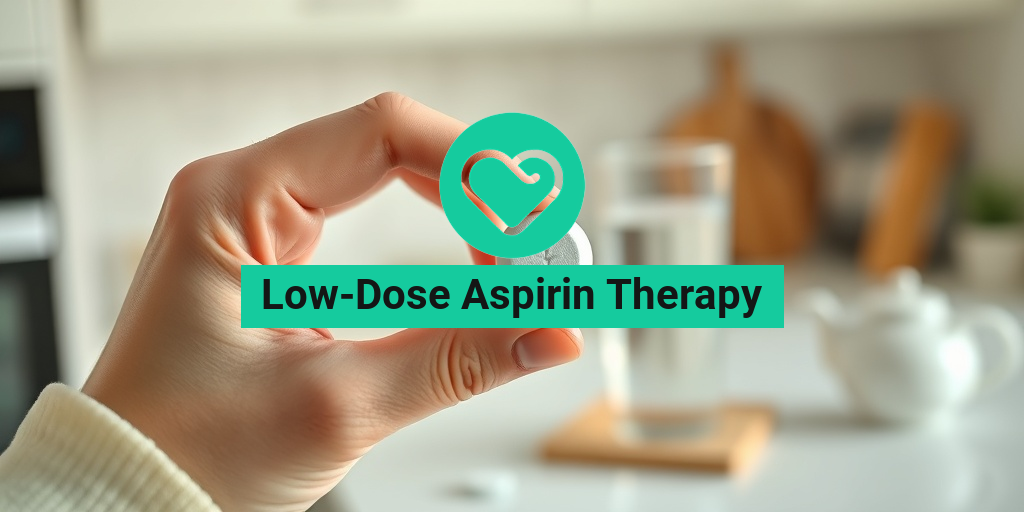What Are Umbilical Cord Blood Stem Cells?
Umbilical cord blood stem cells are a remarkable resource derived from the blood found in the umbilical cord and placenta after childbirth. These stem cells are unique because they possess the ability to develop into various types of cells in the body, making them a vital component in regenerative medicine and therapeutic treatments.
The Science Behind Umbilical Cord Blood Stem Cells
When a baby is born, the umbilical cord is typically clamped and cut, leaving behind a rich source of blood that is often discarded. However, this blood contains hematopoietic stem cells, which are responsible for producing all the different types of blood cells, including red blood cells, white blood cells, and platelets. These stem cells are less mature than those found in bone marrow, making them easier to collect and use in medical treatments.
How Are They Collected?
The collection of umbilical cord blood stem cells is a simple and painless process. It occurs immediately after the birth of the baby, either through a public or private cord blood banking service. The procedure involves:
- Clamping the umbilical cord after birth.
- Using a sterile needle to draw blood from the umbilical cord into a collection bag.
- Transporting the collected blood to a laboratory for processing and storage.
This process is safe for both the mother and the newborn, and it does not interfere with the delivery or the health of the baby.
Benefits of Cord Blood Stem Cells
The advantages of umbilical cord blood stem cells are numerous, making them a valuable asset in modern medicine. Here are some of the key benefits:
1. Treatment of Blood Disorders
Umbilical cord blood stem cells are primarily used in the treatment of various blood disorders, including:
- Leukemia – A type of cancer that affects blood and bone marrow.
- Lymphoma – A cancer of the lymphatic system.
- Sickle Cell Disease – A genetic disorder that affects hemoglobin in red blood cells.
These stem cells can help restore healthy blood cell production, offering hope to patients who may not respond to traditional treatments.
2. Less Risk of Rejection
One of the significant advantages of using umbilical cord blood stem cells is the lower risk of graft-versus-host disease (GVHD). This condition occurs when the transplanted cells attack the recipient’s body. Since cord blood stem cells are less mature, they are less likely to provoke an immune response, making them a safer option for transplants.
3. Potential for Regenerative Medicine
Research is ongoing into the use of umbilical cord blood stem cells in regenerative medicine. These cells have shown promise in treating conditions such as:
- Neurological disorders – Including cerebral palsy and multiple sclerosis.
- Cardiovascular diseases – Such as heart attacks and heart failure.
- Diabetes – By potentially regenerating insulin-producing cells.
The potential applications of these stem cells are vast, and ongoing studies continue to explore their capabilities.
4. Cord Blood Banking
Many parents choose to bank their baby’s cord blood for future use. Cord blood banking allows families to store these valuable stem cells for potential future medical needs. This proactive approach can provide peace of mind, knowing that a source of treatment is available should the need arise.
5. Ethical Considerations
Unlike embryonic stem cells, umbilical cord blood stem cells are collected after birth, making their use ethically acceptable to many. This aspect has contributed to their growing popularity in medical research and treatment.
In conclusion, umbilical cord blood stem cells represent a significant advancement in medical science, offering numerous benefits for treating various health conditions. If you’re considering cord blood banking or want to learn more about the potential of these stem cells, resources like Yesil Health AI (yesilhealth.com) can provide evidence-based answers to your questions. 🌟

Uses in Medical Treatments
Umbilical cord blood stem cells have emerged as a revolutionary resource in the field of medicine. These cells, which are collected from the umbilical cord and placenta after childbirth, possess unique properties that make them invaluable for various medical treatments. Let’s explore some of the most significant uses of umbilical cord blood stem cells in modern healthcare.
1. Treatment of Blood Disorders
One of the primary applications of umbilical cord blood stem cells is in the treatment of blood disorders. Conditions such as leukemia, lymphoma, and anemia can be treated effectively with stem cell transplants. The stem cells can regenerate healthy blood cells, offering a potential cure for patients who have exhausted other treatment options.
2. Regenerative Medicine
Umbilical cord blood stem cells are also being explored for their potential in regenerative medicine. These cells can differentiate into various cell types, making them suitable for repairing damaged tissues and organs. Research is ongoing into their use for conditions such as:
- Heart disease – Repairing heart tissue after a heart attack.
- Diabetes – Potentially regenerating insulin-producing cells in the pancreas.
- Neurological disorders – Exploring treatments for conditions like Parkinson’s disease and spinal cord injuries.
3. Immune System Disorders
Another promising area for umbilical cord blood stem cells is in treating immune system disorders. These cells can help re-establish a healthy immune system in patients with conditions such as severe combined immunodeficiency (SCID) and other autoimmune diseases. By transplanting these stem cells, doctors can help patients regain their ability to fight infections and diseases.
4. Clinical Trials and Future Applications
The potential of umbilical cord blood stem cells is still being explored through numerous clinical trials. Researchers are investigating their use in treating a variety of conditions, including:
- Multiple sclerosis
- Stroke recovery
- Osteoarthritis
As science advances, the list of potential applications for umbilical cord blood stem cells continues to grow, offering hope for many patients worldwide. 🌍
Collection Process Explained
The collection of umbilical cord blood stem cells is a straightforward and safe process that occurs immediately after childbirth. Understanding this process can help expectant parents make informed decisions about umbilical cord blood stem cell banking for future medical use.
1. Timing and Procedure
The collection of umbilical cord blood typically takes place within minutes after the baby is born. Here’s how it works:
- After the baby is delivered and the umbilical cord is clamped and cut, a healthcare professional will insert a needle into the umbilical vein.
- Blood is then collected into a sterile bag or container. This process usually takes about 5 to 10 minutes.
- The collected blood is then sent to a laboratory for processing and storage.
2. Safety and Non-Invasiveness
One of the most significant advantages of umbilical cord blood collection is that it is a non-invasive procedure for both the mother and the baby. There are no risks associated with the collection, as it is performed after the baby is safely delivered. This makes it a safe option for families considering umbilical cord blood stem cell banking.
3. Storage and Banking Options
Once collected, umbilical cord blood stem cells can be stored in two main ways:
- Public banking – Donated cord blood is stored in a public bank and made available for anyone in need of a transplant.
- Private banking – Families can choose to store their baby’s cord blood for personal use in the future, should the need arise.
Choosing the right banking option is crucial and should be discussed with healthcare providers to ensure the best decision for your family’s health. 🏥
In summary, umbilical cord blood stem cells hold immense potential in treating various medical conditions, and the collection process is safe and straightforward. As research continues to evolve, these cells may play an even more significant role in future medical therapies.

Storage and Preservation
When it comes to umbilical cord blood stem cells, proper storage and preservation are crucial for ensuring their viability and effectiveness for future medical use. These stem cells, which are rich in hematopoietic (blood-forming) cells, can be collected from the umbilical cord immediately after childbirth. But what happens next? Let’s dive into the methods and technologies used to store and preserve these valuable cells.
Collection Process
The journey of umbilical cord blood stem cells begins with the collection process. After the baby is born and the umbilical cord is clamped and cut, healthcare professionals can collect the blood remaining in the cord and placenta. This process is safe, painless, and does not interfere with the delivery of the baby or the mother.
Preservation Techniques
Once collected, the umbilical cord blood is processed and prepared for storage. The two primary methods of preservation are:
- Cryopreservation: This is the most common method, where the stem cells are frozen at extremely low temperatures using liquid nitrogen. This process helps to maintain the cells’ viability for many years, potentially decades.
- Controlled Rate Freezing: This technique involves gradually lowering the temperature of the stem cells to prevent the formation of ice crystals, which can damage the cells. This method is crucial for ensuring the long-term health of the stem cells.
Storage Facilities
After processing, the umbilical cord blood stem cells are stored in specialized facilities known as cord blood banks. These banks are equipped with advanced technology to monitor and maintain the optimal storage conditions. It’s essential to choose a reputable bank that follows strict regulatory guidelines to ensure the highest quality of preservation.
Advantages of Banking Umbilical Cord Blood
Banking umbilical cord blood stem cells offers several advantages:
- Potential for Future Therapies: These stem cells can be used in various treatments, including blood disorders, immune deficiencies, and certain cancers.
- Family Health Security: Storing cord blood can provide a potential match for siblings or other family members who may need stem cell therapy in the future.
- Less Risk of Rejection: Since the stem cells are collected from the baby, there is a lower risk of rejection compared to stem cells from unrelated donors.
Research and Clinical Trials
The field of umbilical cord blood stem cells is rapidly evolving, with ongoing research and clinical trials exploring their potential in various medical applications. These studies aim to unlock new therapies and improve existing treatments, making it an exciting area of investigation.
Current Research Areas
Researchers are focusing on several key areas regarding umbilical cord blood stem cells:
- Regenerative Medicine: Scientists are investigating how these stem cells can be used to regenerate damaged tissues and organs, offering hope for conditions like heart disease and spinal cord injuries.
- Autoimmune Diseases: Clinical trials are exploring the use of cord blood stem cells in treating autoimmune diseases, such as multiple sclerosis and lupus, by modulating the immune response.
- Neurological Disorders: Research is underway to assess the efficacy of cord blood stem cells in treating neurological conditions, including cerebral palsy and traumatic brain injuries.
Clinical Trials and Their Importance
Clinical trials play a vital role in advancing our understanding of umbilical cord blood stem cells. These trials help determine the safety and effectiveness of new treatments and therapies. Participating in clinical trials can provide patients access to cutting-edge therapies that are not yet widely available.
Many clinical trials are currently underway, focusing on various diseases and conditions. Patients interested in participating should consult with their healthcare providers to explore available options and determine eligibility.
Future Directions
The future of umbilical cord blood stem cells looks promising, with ongoing advancements in technology and research. As scientists continue to uncover the potential of these cells, we may see new therapies that can transform the landscape of medicine. The ability to harness the power of umbilical cord blood stem cells could lead to breakthroughs in treating previously incurable conditions, offering hope to countless individuals and families.

Ethical Considerations
The use of umbilical cord blood stem cells has sparked significant ethical discussions in the medical community and among expectant parents. As these cells hold immense potential for treating various diseases, understanding the ethical implications is crucial.
Informed Consent
One of the primary ethical considerations revolves around informed consent. Parents must be fully educated about the process of cord blood collection and the potential uses of the stem cells. This includes understanding the benefits, risks, and the long-term implications of banking these cells. Ensuring that parents are making informed decisions is essential to uphold ethical standards in medical practices.
Ownership and Access
Another significant ethical issue is the question of ownership. Once the umbilical cord blood is collected, who owns it? Is it the parents, the medical facility, or the bank where it is stored? Additionally, access to these stem cells for research and treatment raises questions about equity. Ensuring that all individuals have equal access to cord blood stem cell therapy is vital to prevent disparities in healthcare.
Commercialization of Cord Blood Banking
The commercialization of umbilical cord blood stem cell banking also raises ethical concerns. While private banking offers parents the option to store their child’s stem cells for personal use, it can be costly and may not be accessible to everyone. This creates a divide between those who can afford to bank their child’s cord blood and those who cannot, leading to ethical dilemmas regarding fairness and justice in healthcare.
Research and Use in Treatments
The potential for umbilical cord blood stem cells to treat various conditions, including blood disorders and immune deficiencies, is promising. However, ethical considerations arise regarding how these cells are used in research and therapy. Ensuring that research is conducted ethically, with respect for the donors and their families, is paramount. This includes adhering to guidelines for the use of human tissues in research and ensuring that the benefits of such research are shared broadly.
Future of Cord Blood Stem Cells
The future of umbilical cord blood stem cells is bright, with ongoing research and advancements in technology paving the way for new therapies and treatments. As we look ahead, several key trends and developments are shaping the landscape of cord blood stem cell applications.
Advancements in Stem Cell Technology
Innovations in stem cell technology are expanding the potential uses of cord blood stem cells. Researchers are exploring ways to enhance the efficacy of these cells in treating various diseases. For instance, advancements in stem cell injections and conditioned media derived from cord blood are being investigated for their therapeutic benefits. These technologies could lead to more effective treatments for conditions like cerebral palsy and autism.
Increased Awareness and Acceptance
As more parents become aware of the benefits of cord blood stem cell banking, the acceptance of this practice is likely to grow. Educational campaigns and success stories from families who have benefited from stored stem cells are helping to demystify the process. This increased awareness can lead to higher rates of donation and banking, ultimately benefiting more patients in need of treatments.
Regulatory Developments
Regulatory bodies are also adapting to the evolving landscape of cord blood stem cell therapy. As new therapies emerge, regulations will need to keep pace to ensure safety and efficacy. This includes establishing guidelines for the collection, storage, and use of cord blood stem cells in clinical settings. Striking a balance between innovation and regulation will be crucial for the future of this field.
Potential for Broader Applications
The potential applications of umbilical cord blood stem cells are expanding beyond traditional uses. Research is ongoing into their role in regenerative medicine, tissue engineering, and even gene therapy. As scientists continue to unlock the mysteries of these cells, we may see groundbreaking treatments for conditions that currently have limited options.
In conclusion, the future of umbilical cord blood stem cells is filled with promise. With ethical considerations guiding the way and advancements in technology paving new paths, the potential for these cells to transform healthcare is immense. 🌟

Frequently Asked Questions about Umbilical Cord Blood Stem Cells
What are Umbilical Cord Blood Stem Cells?
Umbilical cord blood stem cells are specialized cells found in the blood of the umbilical cord and placenta. They have the unique ability to develop into various types of blood cells, making them valuable for medical treatments and research.
How are Umbilical Cord Blood Stem Cells Collected?
The collection of umbilical cord blood stem cells occurs immediately after childbirth. The process is safe and painless for both the mother and the newborn. Blood is drawn from the umbilical cord using a sterile collection bag, ensuring that the stem cells are preserved for future use.
What are the Advantages of Using Umbilical Cord Blood Stem Cells?
- Less Risk of Rejection: Since these stem cells are derived from the same individual, there is a lower risk of rejection during transplants.
- Diverse Treatment Options: They can be used to treat various conditions, including blood disorders, immune deficiencies, and certain cancers.
- Non-Invasive Collection: The collection process is non-invasive and poses no risk to the mother or baby.
What is Umbilical Cord Blood Stem Cell Banking?
Umbilical cord blood stem cell banking refers to the process of collecting and storing these stem cells for potential future medical use. Parents can choose to bank their baby’s cord blood with a private or public bank, ensuring that the stem cells are available if needed for treatment.
How are Umbilical Cord Blood Stem Cells Used in Therapy?
Umbilical cord blood stem cells therapy involves using these cells to treat various diseases. They can be administered through a transplant, where the stem cells help regenerate healthy blood cells in patients with conditions like leukemia or lymphoma.
What is the Role of Umbilical Cord Blood Stem Cell Conditioned Media?
Umbilical cord blood stem cell conditioned media contains growth factors and cytokines that can promote healing and tissue regeneration. This media is being researched for its potential applications in regenerative medicine.
Are There Any Risks Associated with Umbilical Cord Blood Stem Cell Transplants?
While umbilical cord blood stem cell transplants are generally safe, there are potential risks, including infection and complications related to the transplant procedure. It is essential to discuss these risks with a healthcare provider.
Can Umbilical Cord Blood Stem Cells Be Used for Injections?
Umbilical cord blood stem cell injections are being explored in various clinical trials for conditions such as joint pain and degenerative diseases. These injections aim to harness the regenerative properties of the stem cells to promote healing.
What is the Future of Umbilical Cord Blood Stem Cell Technology?
The field of umbilical cord blood stem cell technology is rapidly evolving, with ongoing research aimed at expanding the therapeutic applications of these cells. Innovations may lead to new treatments for a broader range of diseases and conditions.
How Can I Learn More About Umbilical Cord Blood Stem Cells?
For more information on umbilical cord blood stem cells, consider consulting with a healthcare professional or visiting reputable medical websites that specialize in stem cell research and therapies.




